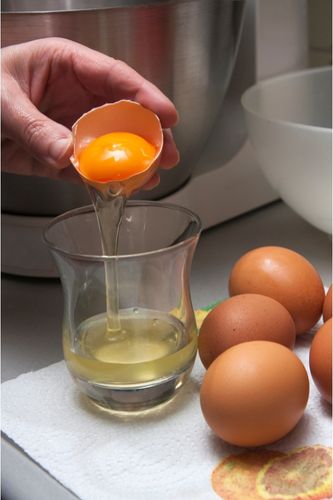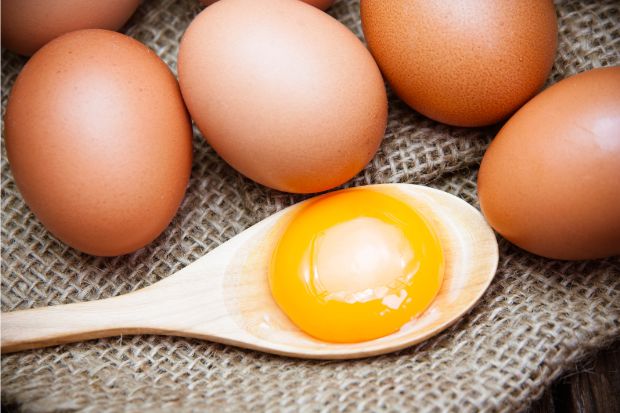You have some leftover egg yolks from your last baking project, and you want to know if you can store them and use them to bake again later—or if you should just make scrambled eggs and be done with it.
Can You Use Egg Yolks Instead of Whole Eggs?

Yes, you can absolutely use egg yolks instead of whole eggs in most recipes.
The reason that you can use egg yolks in place of whole eggs is because they are primarily composed of fat and minerals, which helps to give baked goods their rich texture and flavor. In fact, if you want to make a recipe that is particularly rich and decadent, you can use all egg yolks and forgo the egg whites altogether.
In this article, we’ll go over the nuances of how to use egg yolks in recipes, as well as some tips and tricks for getting the most out of your egg yolks.
Using Egg Yolks in Baking
When it comes to using egg yolks in place of whole eggs, there are a few things that you should keep in mind. First, because egg yolks mostly contain fat and nutrients such as iron and B vitamins, you may need to add a little bit of liquid to your recipe to counteract the richness. Second, egg whites contain protein, which helps to give baked goods structure—so if you’re using just yolks, your final product may be a little bit denser.

That said, as long as you keep these things in mind, using egg yolks in place of whole eggs is perfectly acceptable and can save you from having to waste food. So the next time you have some leftover yolks, don’t throw them out—bake with them instead!
However, it is important to note that while egg yolks can be used to substitute whole eggs, they cannot be used to substitute egg whites when a recipe calls for egg whites only.
How To Substitute Egg Yolks for Whole Eggs
So how do you know when you can use an egg yolk in place of a whole egg? We’ve got you covered. Here are some general guidelines to follow:
- If a recipe calls for one whole egg, you can substitute two egg yolks.
- If a recipe calls for two whole eggs, you can substitute three or four egg yolks.
- If a recipe calls for three whole eggs, you can substitute six egg yolks.
Remember, these are general guidelines, and you may need to make a few adjustments depending on the specific recipe that you’re using. But in general, this is a good rule of thumb to follow.

Tips When Using Egg Yolks Instead of Whole Eggs
Here are a few tips to keep in mind when substituting egg yolks for whole eggs in your baking recipes:
- If you’re using all egg yolks, you may need to add a little bit of liquid to your recipe to counteract the richness.
- Egg whites contain protein, which helps to give baked goods structure, so if you’re using all yolks, your final product may be a little bit denser. If a recipe relies on the protein of egg whites for structure, it might not be a good idea to use just egg yolks.
- When in doubt, add an extra egg yolk—it’s better to have too much than too little.
Which Is Better for Baking?
The major differences between baked goods made with egg yolks vs. egg whites are:
- Richness. Baked goods made with all egg yolks will be richer in flavor and texture than those made with egg whites.
- Structure. Because egg whites contain protein, they help to give baked goods structure. This means that baked goods made with egg whites will be slightly lighter and airier than those made with egg yolks.
So which is better for baking, egg whites or egg yolks? The answer depends on what you’re looking for in your baked goods. If you want a light and airy texture, go with egg whites. If you’re looking for rich flavor and a dense texture, egg yolks are the way to go.

Always Refrigerate Raw Egg Yolks
Raw egg yolks should always be stored in the refrigerator before you use them in a recipe. This is because eggs (particularly pasteurized eggs) can spoil quickly at room temperature. So to be on the safe side, always store your raw egg yolks in the fridge until you’re ready to use them.
Egg yolks are great for adding richness and flavor to your baking recipes, and they can be used in place of whole eggs in most cases. Just remember to keep an eye on the liquid content of your recipe as well as the overall density of your baked goods. Have fun experimenting with different recipes!
Also, if you’re curious about taking the opposite approach, we covered how to use whole eggs instead of egg yolks in pudding.
